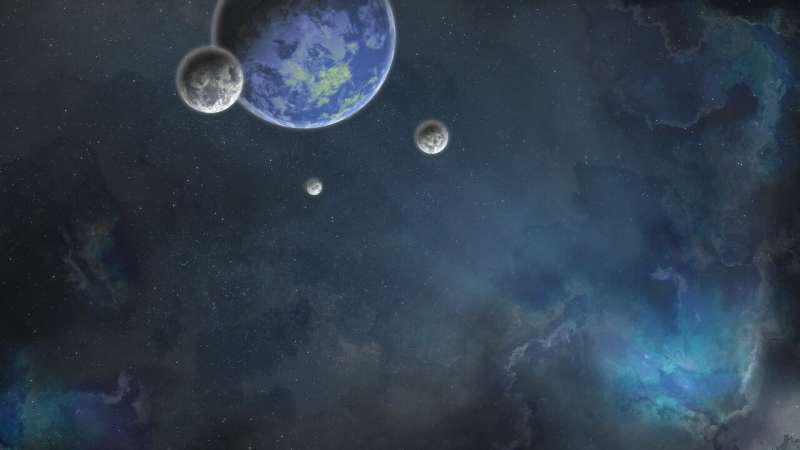Credit: CC0 Public Domain
A team of researchers from several European countries and one from Chile has found evidence of three possibly habitable exoplanets circling the star GJ1061. In their paper uploaded to the arXiv preprint server, and soon to be published in Monthly Notices of the Royal Astronomical Society, the group describes their study of the star system and what they found.
The closest star system to Earth is Proxima Centauri—it is approximately 4.2 light-years away. Prior research has shown that its volatility likely means its planets are not habitable. In this new effort, the researchers have been studying the star system GJ1061, which is the 20th-closest star system, approximately 17.5 light-years away. It is classified as a small, low-mass (M dwarf) star with low volatility, suggesting it might have habitable planets. In this new effort, the researchers studied the path followed by GJ1061 to determine if it has planets, and whether such planets might be habitable.
In their study of the star, using data from the ESO in Chile, the researchers used the radial velocity method to detect the presence of planets. The technique involves looking at very small wobbles in a star's orbit, which indicate planetary gravity pulling on it. The researchers note that historically, the technique has only been used to detect large planets, but recent improvements have allowed for finding smaller ones as well.
The group reports that they found evidence of three planets and possibly a fourth circling GJ1061. All three of the planets were found to be slightly larger than Earth and all three orbit close to the star—each takes just days to make its way around. The researchers focused on one planet in particular, which they named planet d. They found it took only 13 days for it to make its way around its star. The researchers calculated that such a distance puts it in the Goldilocks zone. They also note that, unfortunately, M dwarf stars tend to have a volatile history. If planet d was blasted with radiation for millions of years, it is not likely suitable to harbor life now.
More information: Red Dots: A temperate 1.5 Earth-mass planet in a compact multi-terrestrial planet system around GJ1061, arXiv:1908.04717 [astro-ph.EP] arxiv.org/abs/1908.04717
Journal information: arXiv , Monthly Notices of the Royal Astronomical Society
© 2019 Science X Network
























